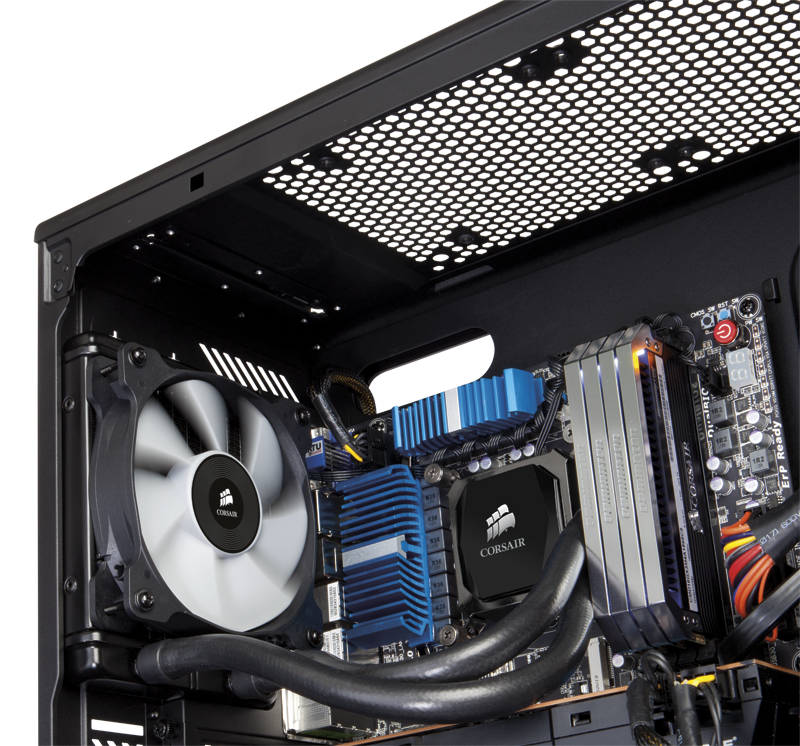

…and finally the Frio OCK, which takes up just about all of the available space provided. Here’s a quick shot of the Jing installed… Our test chassis just happens to be another Thermaltake product so I don’t expect there to be any issues there, but always do your homework before buying any components to ensure compatibility. Once some TIM is applied to the CPU the screws on each T-bar are threaded through the mounting bars and tightened evenly. Moving on, the T-bars are also used in Intel systems and are secured to the cooler the same way as mentioned earlier. It took about 10 minutes to allow for enough clearance but could have been done in less than 2 minutes if done with a rotary tool. Ghetto mod! A simple box cutter was used to shave away the lip of the back plate that would come into contact with the capacitors. As you can see he was right on the money as the Jing and Frio back plates are identical and would end up with the same problem – so what’s a guy to do? This is a layout that many, if not all ASUS P67 and Z68 boards have, and Robert found out the hard way that some back plates can crush the capacitors. Thinking back to a conversation I had with our SSD guru, Robert Tanner, I decided to be cautious when installing the cooler in our test system because of a row of capacitors that run down the right side of the CPU socket on the back of the motherboard. This time the back plate sits with the Intel lettering facing away, the bolts thread through each corner, the plastic spacers thread over them, the Intel mounting bars go on and then everything is held in place with the metal nuts. After that it’s just a matter of tightening each one evenly and connecting the fans.īoth coolers mount onto Intel systems in much the same way. Doing so will prevent excess force from being exerted onto one edge of the CPU and the pins in the socket. The spring-loaded screws on each of the T-bars thread into the mounting bars but it’s important to start one side just enough to make the screw catch before moving onto the other. With some TIM applied to the CPU, it’s time to mount the cooler. It’s a good thing the Frio OCK was around so I could steal a screw from its box of bits and pieces. Instead of four screws of the same size, one was much too small and clearly not intended for the Jing. One of these things just doesn’t belong.” Fine, I’ll set aside the Sesame Street references for a moment. “One of these things is not like the other. When securing the T-bars to the Jing I ran into my first snag. The rest of the hardware goes onto the cooler itself in the form of a T-bar on each side that are secured using two screws for each.

A black plastic spacer is threaded over each bolt followed by an AMD mounting bar on each end and then everything is capped off with a metal nut to hold it all in place. Four bolts thread through each hole in the back plate and through the mounting points in the motherboard. Next, the plastic back plate is placed on the back side of the motherboard with the AMD lettering facing away. Starting with AMD systems, the stock motherboard mounts will need to be removed. The Jing should have the fans removed prior to installation and the Frio OCK should have the entire fan assembly removed so that the mounting screws can be accessed. Its outward footprint is smaller and should allow for a better view of the mounting system once assembled. Since both coolers use the same mounting method and hardware, the Jing has been chosen to show just how the installation goes.


 0 kommentar(er)
0 kommentar(er)
